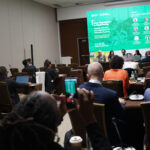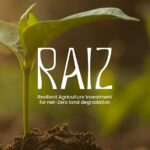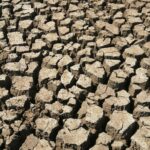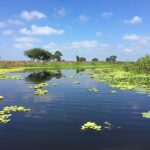Where Restoration Meets Culture: Our Visit to the Krenak Indigenous Community
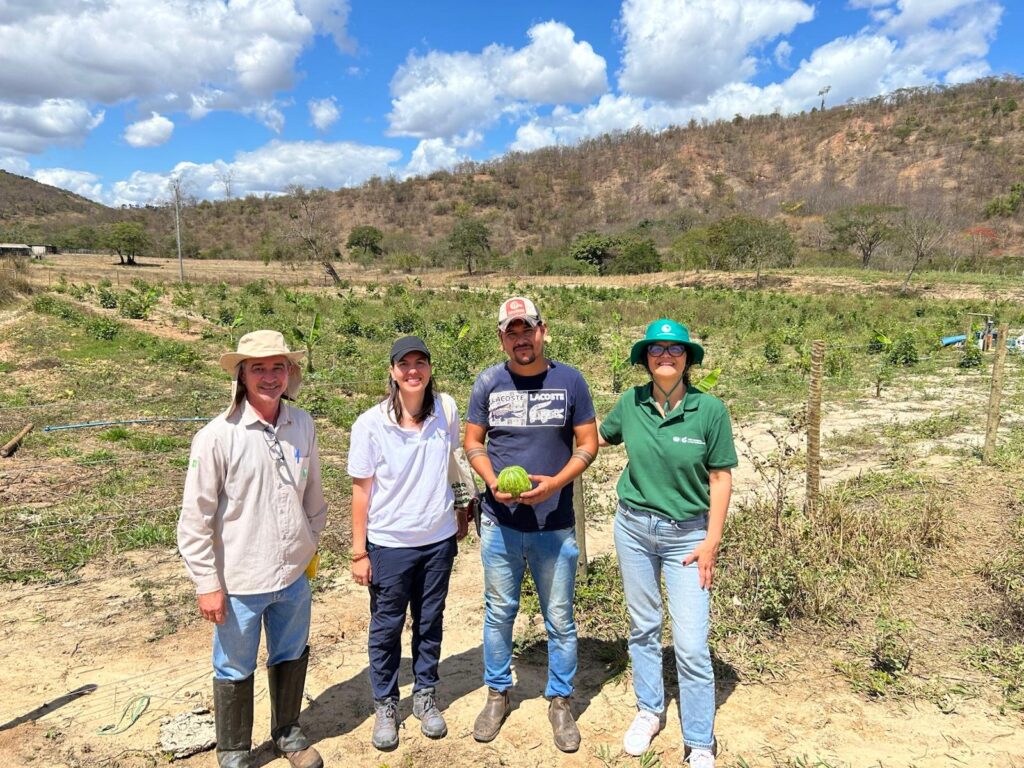
From left to right: Toabaldo Gaede (Instituto Terra) representative, Paula Padrino (UNCCD-G20 GLI), Geovani Krenak and Catharina Vale, G20 GLIPhoto credit: Paula Padrino Vilela
On the final day of the G20 GLI mission at Instituto Terra last month, we joined Toabaldo Gaede from the Instituto Terra on a field visit to the Krenak indigenous territory.
The Krenak territory lies in the Rio Doce valley, an area deeply scarred over decades by land degradation, deforestation and erosion . Recovering the Mata Atlântica here is a major challenge. But Instituto Terra, in partnership with the Krenak, is proving that restoration is possible.
Recently, they joined forces to implement a SAF (Sistema Agroflorestal, or Agroforestry System). The model combines food crops, fruit trees and native species in the same area, mimicking natural forest processes.
We were warmly welcomed by Geovanni, one of Krenak’s leaders. Walking through the plots, we saw the early signs of recovery. Small trees are beginning to grow and soil that was once compacted now starting to regain fertility.
This visit was uniquely special because in one single place we saw the convergence of restoration, economics and culture in the heart of the Atlantic Forest.
Restoring a very degraded region of the Atlantic Forest is no small feat. Yet, as the Krenak explained, this project is about “bringing back the forest as it used to be — a forest full of life and biodiversity, one that responds not only to climate challenges, but also to the needs of the people who live in the territory.”
This partnership demonstrates that restoration flourishes when different actors come together, blending science, ancestral knowledge and modern technology.
The partnership began as part of Instituto Terra’s Terra Doce program in the form of a new model that seeks to reconcile conservation with sustainable production. The results prove SAFs can regenerate soil and water while generating income for local communities.
Economy and Adaptation
For the Krenak people, restoration is not separate from livelihood. Implementing a biodiverse SAF is a way to ensure the forest provides food and income.
This is not a monoculture plantation. Rather, it is an integrated system that includes cacao and staple crops alongside culturally significant plants such as urucum and genipapo, which the Krenak use in painting and rituals, and tubers, which are part of their diet.
The Krenak hope to prove that economy and restoration can coexist: producing while preserving and earning while regenerating.
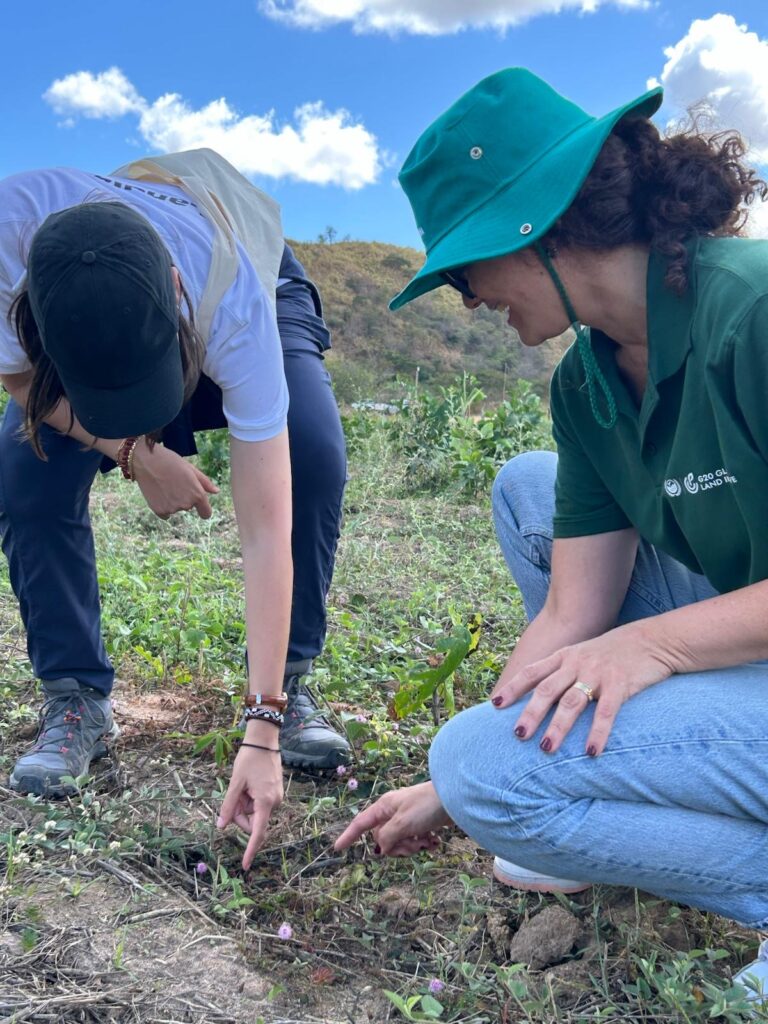
Paula Padrino (left) and Catharina Vale (right), UNCCD-G20 GLI, exploring the SAF
Photo Credit: Paula Padrino Vilela/UNCCD G20 GLI
Culture Woven into the Forest
Beyond ecology and economics, culture is central. Integrating culturally important species into the SAF system is a deliberate choice. As Geovani highlighted: if a plant’s name is no longer spoken, the memory of it may vanish — and with it, the plant itself. By planting urucum, genipapo and other ancestral species, the Krenak are ensuring that their biocultural heritage endures alongside the forest’s return.
Final reflections
This was not just a technical mission or a forest planting activity. It was a multidimensional journey that asked us to rethink what restoration means:
- Restoration — not just planting trees, but reviving relationships between soil, species and people.
- Economy — not extraction, but sustainable use, creating livelihoods that care for the forest.
- Culture — not static heritage, but a living practice where language, plants and traditions are kept alive together.
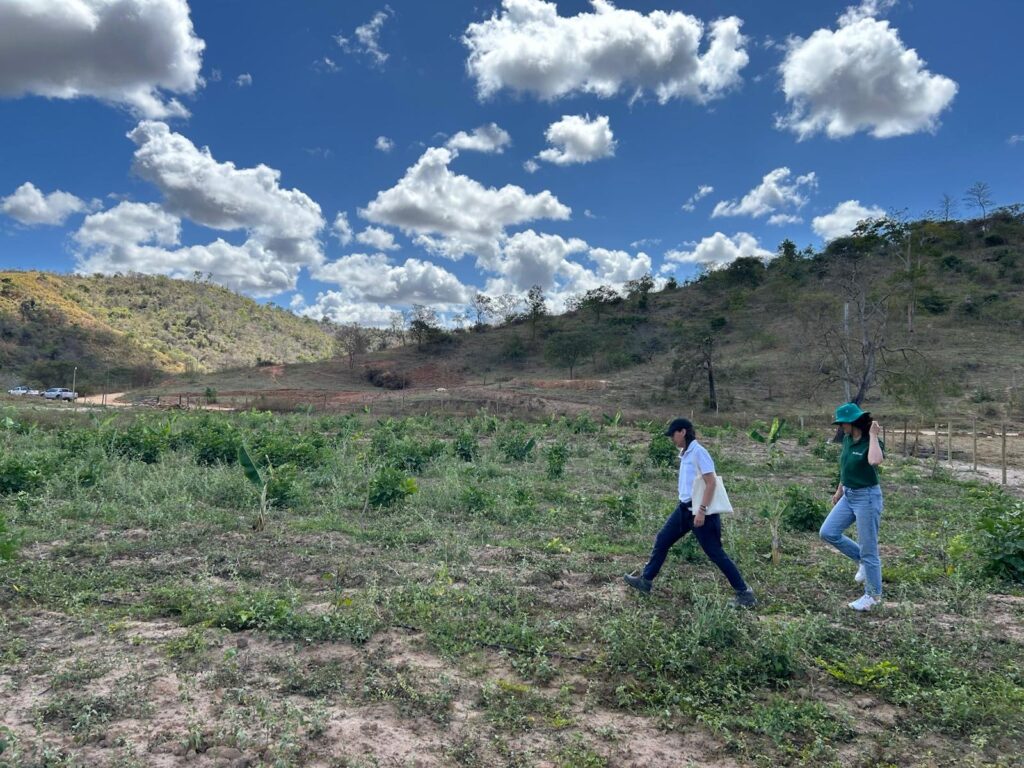
Paula Padrino (left), Catharina Vale (right), UNCCD-G20 GLI, exploring the SAF
Photo Credit: Paula Padrino Vilela/UNCCD G20 GLI
